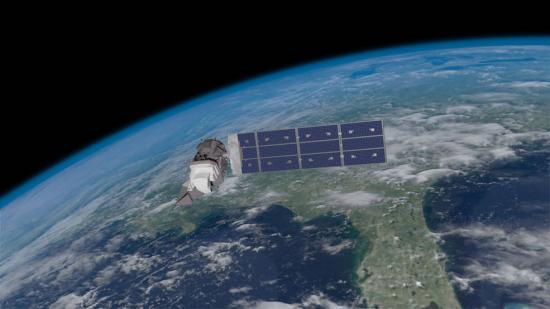
July 19, 2021 • Media accreditation is open for the upcoming launch of the Landsat 9 satellite, a joint NASA and U.S. Geological Survey (USGS) mission that will continue the legacy of monitoring Earth’s land and coastal regions that began with the first Landsat in 1972.
Landsat 9 is scheduled to launch Sept. 16, 2021, on a United Launch Alliance Atlas V 401 rocket from Space Launch Complex 3 at Vandenberg Space Force Base in California. The launch is managed by NASA’s Launch Services Program, based at the agency’s Kennedy Space Center in Florida. Live coverage of the launch will air on NASA TV, the NASA app, and the agency’s website.
Both U.S. and U.S.-based international media, as described in NASA’s newly released agencywide media accreditation policy, must apply by 4 p.m. EDT Tuesday, July 27, 2021. Media accreditation requests must be submitted online at:
Due to the ongoing coronavirus (COVID-19) pandemic, NASA will be credentialing a limited number of media to cover the Landsat 9 launch from Vandenberg. With COVID-19 safety restrictions at the base and quarantine requirements, international media who would be traveling from overseas will not be able to register for this launch. International media based in the U.S. may also apply.
NASA is proactively monitoring the coronavirus situation as it evolves. The agency will continue to follow guidance from local officials, the Centers for Disease Control and Prevention, and the agency’s chief health and medical officer and will communicate any updates that may impact mission planning or media access as they become available.
Once fully commissioned in orbit, Landsat 9 will replace Landsat 7, and join its sister satellite Landsat 8 to collect images from across the planet every eight days. This calibrated data will continue the Landsat program’s critical role in monitoring land use and helping decisionmakers manage essential resources including crops, water resources, and forests.
Images from Landsat 9 will be added to nearly 50 years of free and publicly available data from the mission – the longest data record of Earth’s landscapes from space. With Landsat’s medium resolution, researchers harmonize the images to detect the footprint of human activities and their impact on climate change over the decades.
NASA’s Goddard Space Flight Center in Greenbelt, Maryland, manages the Landsat 9 mission. Goddard teams also built and tested one of the two instruments on Landsat 9, the Thermal Infrared Sensor 2 (TIRS-2) instrument. TIRS-2 will use thermal imaging to make measurements that are used to calculate soil moisture and detect the health of plants.
The USGS Earth Resources Observation and Science Center in Sioux Falls, South Dakota, will operate the mission and manage the ground system, including maintaining the Landsat archive. Ball Aerospace in Boulder, Colorado, built and tested the Operational Land Imager 2 (OLI-2) instrument, another imaging sensor. Northrop Grumman in Gilbert, Arizona, built the Landsat 9 spacecraft, integrated it with instruments, and tested the observatory.
===
Tylar Greene
Headquarters, Washington
202-358-0030
tylar.j.greene@nasa.gov
Jake Richmond
Goddard Space Flight Center, Greenbelt, Md.
301-286-6255
Jacob.a.richmond@nasa.gov
Mary MacLaughlin
Kennedy Space Center, Fla.
321-289-7960
mary.maclaughlin@nasa.gov






